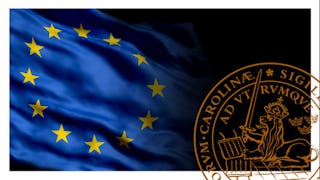People have become more critical of EU policy and often seem to prefer local policy solutions in response to globalisation problems. How do you experience EU policy? Does it help? And if not, how can we change this? In this course, we learn how the European Union prepares and decides on policy, and how policy is transferred to member states and implemented by various authorities, including regional and local governments. We discuss the challenges of the European multi-level governance structure. We also focus on the main causes of policy failure or success. On this journey, we focus on actual policy and present the views of various experts: how easy is it to establish yourself in another EU-country? How do governments make sure that the air you breathe is clean? And who is responsible?


EU policy and implementation: making Europe work!

Instructor: Bernard Steunenberg
20,934 already enrolled
(195 reviews)
Skills you'll gain
Details to know

Add to your LinkedIn profile
See how employees at top companies are mastering in-demand skills

There are 6 modules in this course
Great that you are joining us! In this course you will learn about the fascinating process of European policy-making and implementation. Before you start studying we invite you to go through our introduction module first. Please introduce yourself on the forum to meet your fellow learners. If you encounter any difficulties while studying, please let us know on the forum. For technical difficulties or questions regarding the course certificate, you can always contact the Coursera Learner Helpdesk. Good luck and we hope you will enjoy studying in this course!
What's included
3 videos4 readings1 discussion prompt1 plugin
The course starts by introducing the main concepts such as policy and the policy process, and includes a discussion of what decision-making is. It is shown that in making a decision the decided outcome is not always the most socially desirable state of affairs. This is important to understand in order to appreciate the imperfections of decision-making at the various levels of the European policy process. Furthermore, we explore the European multi-level policy process, as a starting point for the more specialized lectures in the subsequent weeks. In this week, students are also introduced to the policy dossiers to make their choice.
What's included
7 videos4 readings8 assignments2 discussion prompts
Focusing on EU decision-making, the main question is: what can go wrong in the European decision-making process over legal measures? The lectures pay attention to the role of sectoral interests in the EU, and time. Policymakers often seem to be in a hurry, which may impact the choices that are made. Furthermore, in the last lecture we turn our perspective to the international context within which the EU operates. International agreements, for example, can be yet another source for further European legislation.
What's included
7 videos4 readings8 assignments1 discussion prompt
Once legal measures have been adopted, the question arises as to what will happen next? For EU directives, the formal requirements need to be transformed into national legislation by member states. We discuss both a legal and a policy perspective on transposition, which provide rather different perspectives on this work. Adopted legal measures may also require further specification, which brings us to the preparation and adoption of delegated and implementing acts. For these acts the European Commission plays an important role. Finally, we look into the role of the European Commission as an actor overseeing transposition in the member states. Does the Commission act as the ‘guardian of the treaties’?
What's included
7 videos4 readings7 assignments2 discussion prompts
What can go wrong with implementation? In this week, we focus on the main causes of policy failure and success by discussing three different groups of theories. These address systemic features, such as time, capacity and culture, institutional or normative features related to groups and behavioral features. Each group of possible features is briefly explained and discussed in the lectures. Furthermore, attention is given to the involvement of regional and local governments in the implementation of European policy within member states, which provides yet another challenge to European policy implementation.
What's included
10 videos5 readings10 assignments
Having experienced the European policy process from European lawmaking to regional and perhaps local implementation, the last week reflects on ways to improve EU policymaking. How can EU policy, but also the policy process be redesigned? What is currently discussed in Brussels? And what are the options? The students will first be introduced to the Better Regulation Agenda of the European Commission, which also aims to improve policymaking. Three different directions of change are discussed in the lectures: (a) the ambition to close the European policy cycle by connecting ex-post evaluations with consultations and impact assessments as tools to prepare for new legislation; (b) introducing more experimentation to obtain better results, and (c) focusing on decentralization as a way of bringing back policymaking power to member states, regional governments or even local government.
What's included
7 videos3 readings7 assignments1 peer review1 discussion prompt
Instructor

Offered by
Explore more from Governance and Society
 Status: Preview
Status: PreviewESCP Business School
 Status: Free
Status: FreeESSEC Business School
 Status: Preview
Status: PreviewTata Institute of Social Sciences
 Status: Free Trial
Status: Free TrialLund University
Why people choose Coursera for their career




Learner reviews
195 reviews
- 5 stars
62.94%
- 4 stars
23.85%
- 3 stars
7.10%
- 2 stars
2.53%
- 1 star
3.55%
Showing 3 of 195
Reviewed on Aug 16, 2017
Great course! It offers you important knowledge about the EU policy making process and shows and explains you the tools you need for a good analysis and which will help you to get the best results.
Reviewed on Nov 12, 2021
i give 5star very interesing course thumbs up 👍 EU policy and implementation🤩🤩
Reviewed on Aug 19, 2024
Amazing for people who want an insight about international politics even if they're not in university

Open new doors with Coursera Plus
Unlimited access to 10,000+ world-class courses, hands-on projects, and job-ready certificate programs - all included in your subscription
Advance your career with an online degree
Earn a degree from world-class universities - 100% online
Join over 3,400 global companies that choose Coursera for Business
Upskill your employees to excel in the digital economy
Frequently asked questions
To access the course materials, assignments and to earn a Certificate, you will need to purchase the Certificate experience when you enroll in a course. You can try a Free Trial instead, or apply for Financial Aid. The course may offer 'Full Course, No Certificate' instead. This option lets you see all course materials, submit required assessments, and get a final grade. This also means that you will not be able to purchase a Certificate experience.
When you purchase a Certificate you get access to all course materials, including graded assignments. Upon completing the course, your electronic Certificate will be added to your Accomplishments page - from there, you can print your Certificate or add it to your LinkedIn profile.
Yes. In select learning programs, you can apply for financial aid or a scholarship if you can’t afford the enrollment fee. If fin aid or scholarship is available for your learning program selection, you’ll find a link to apply on the description page.
More questions
Financial aid available,
¹ Some assignments in this course are AI-graded. For these assignments, your data will be used in accordance with Coursera's Privacy Notice.

